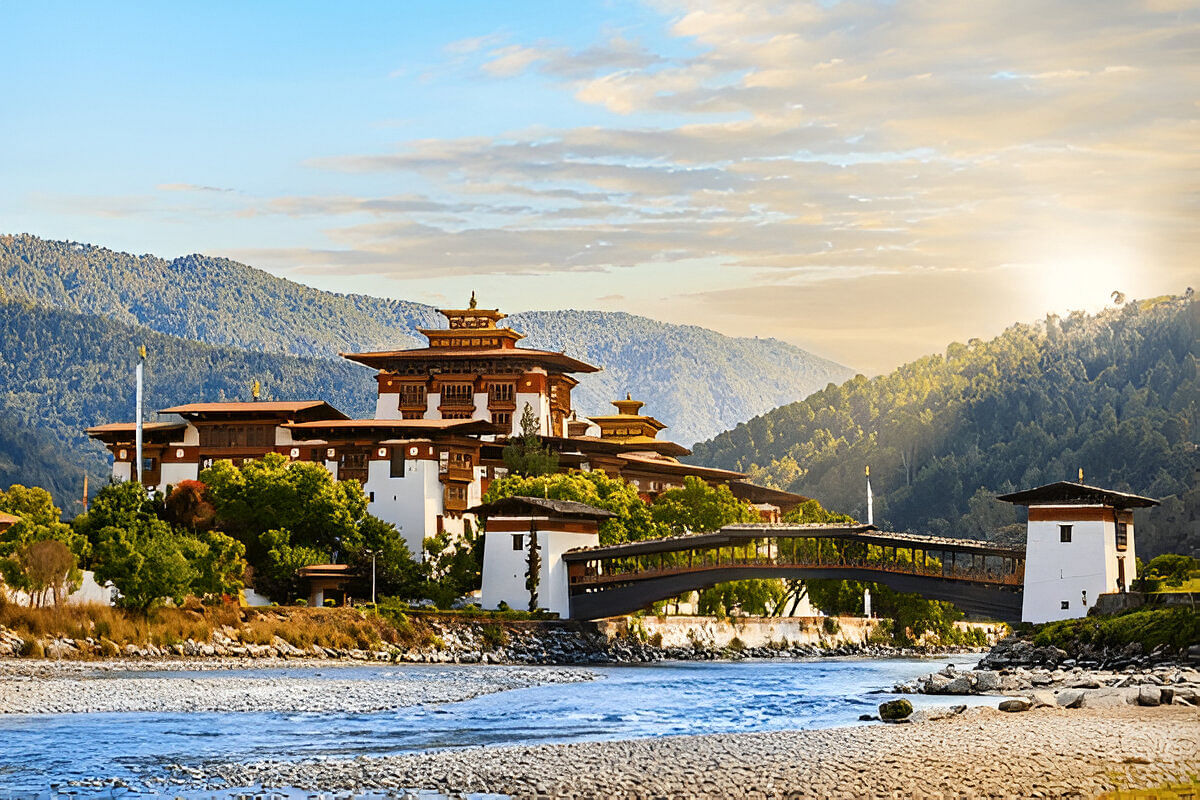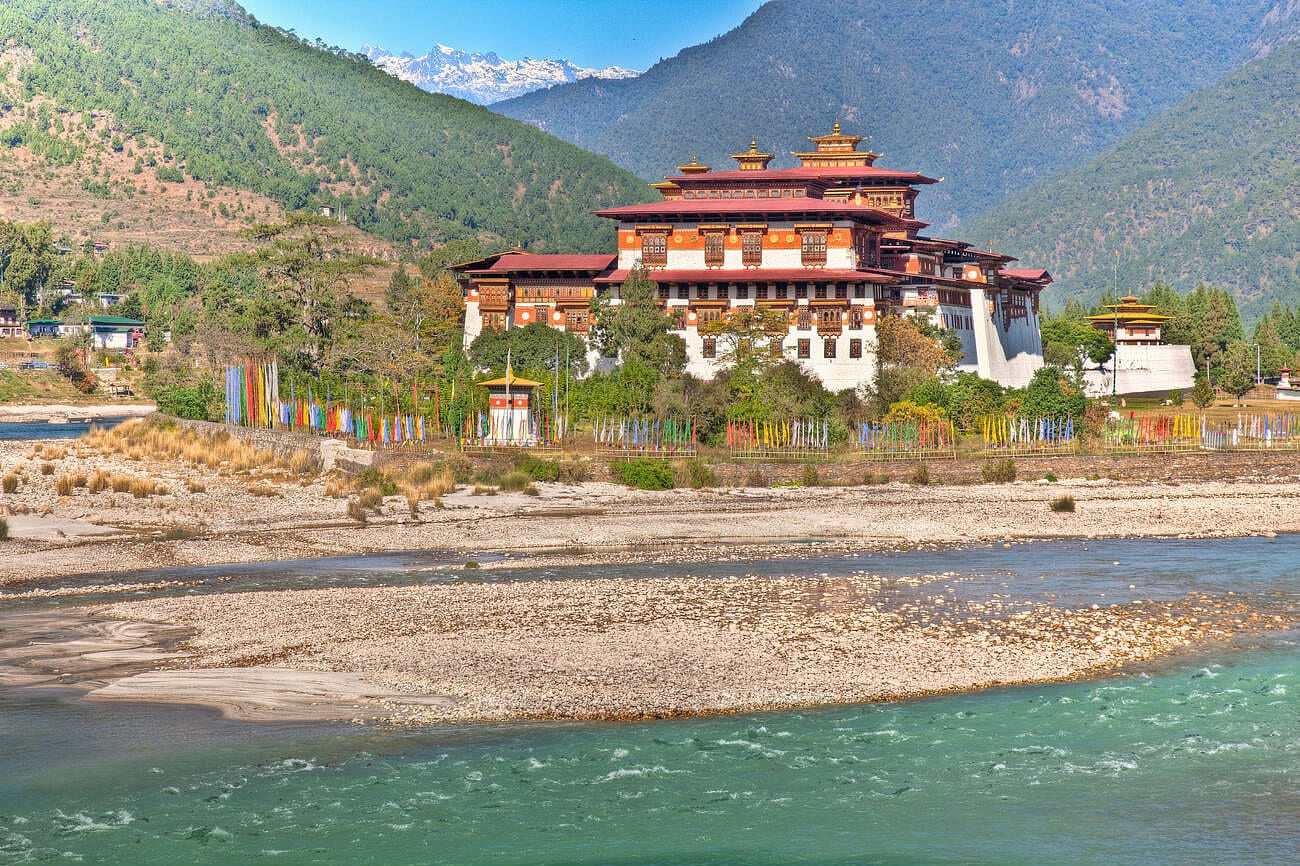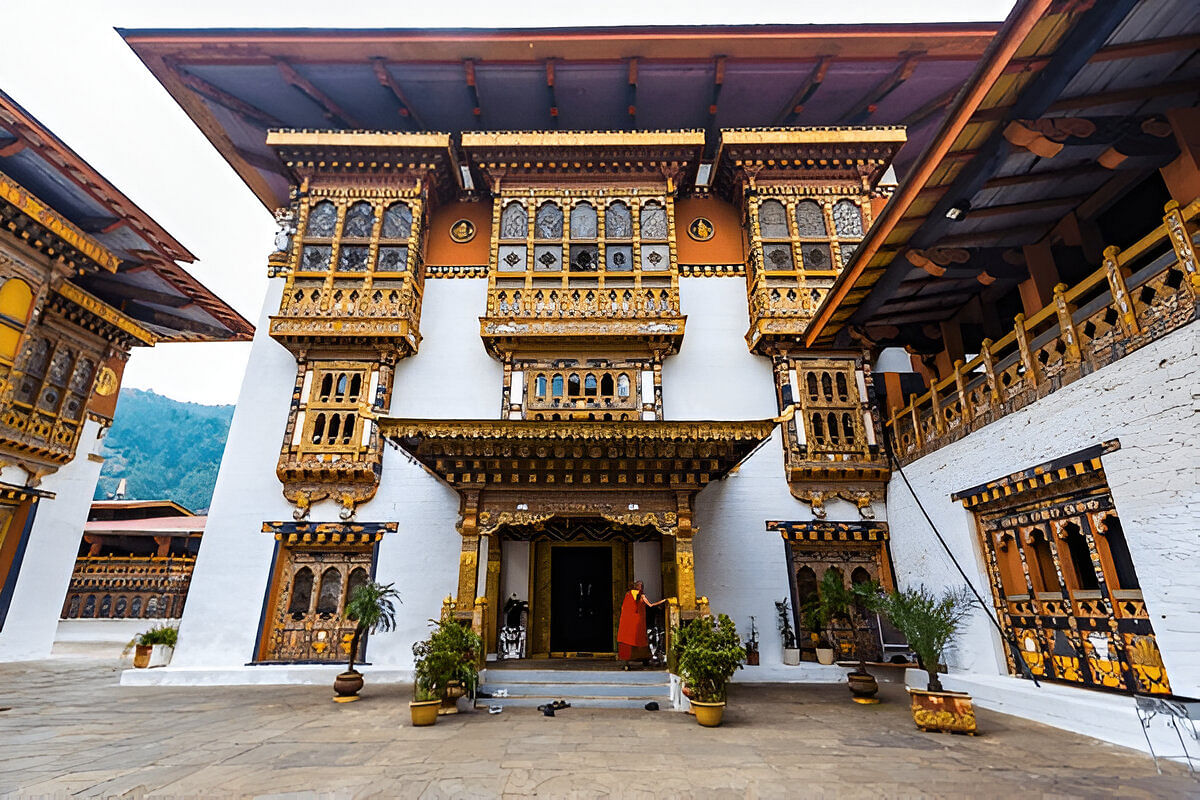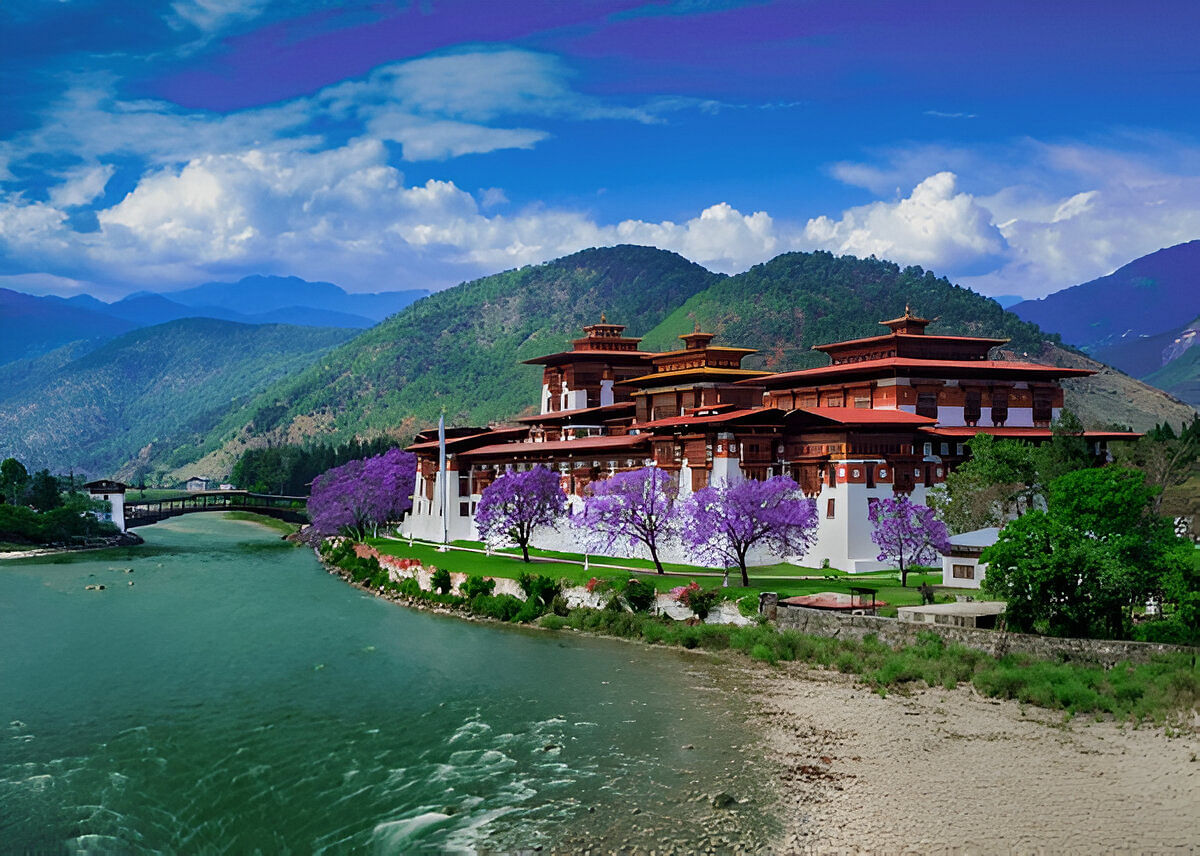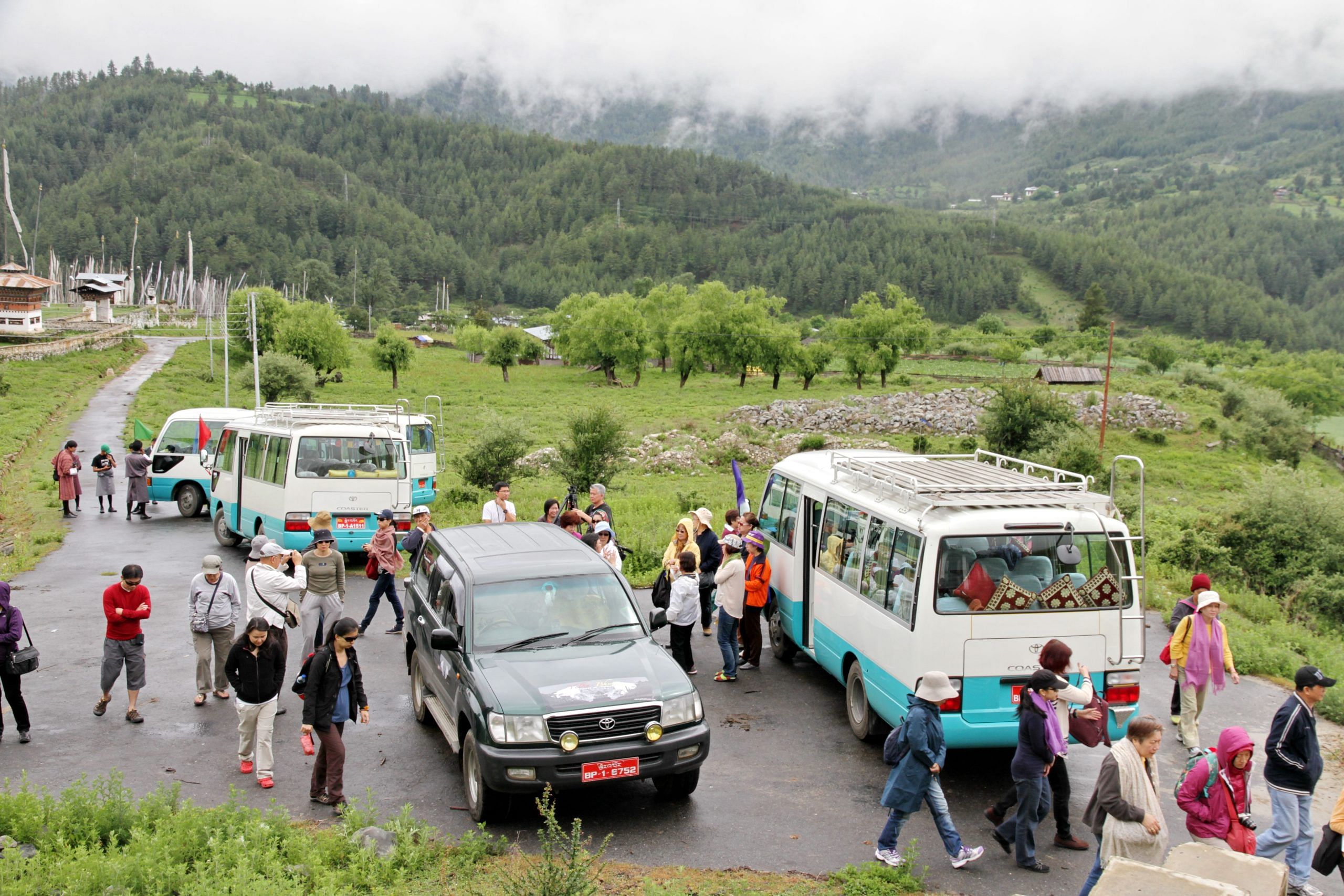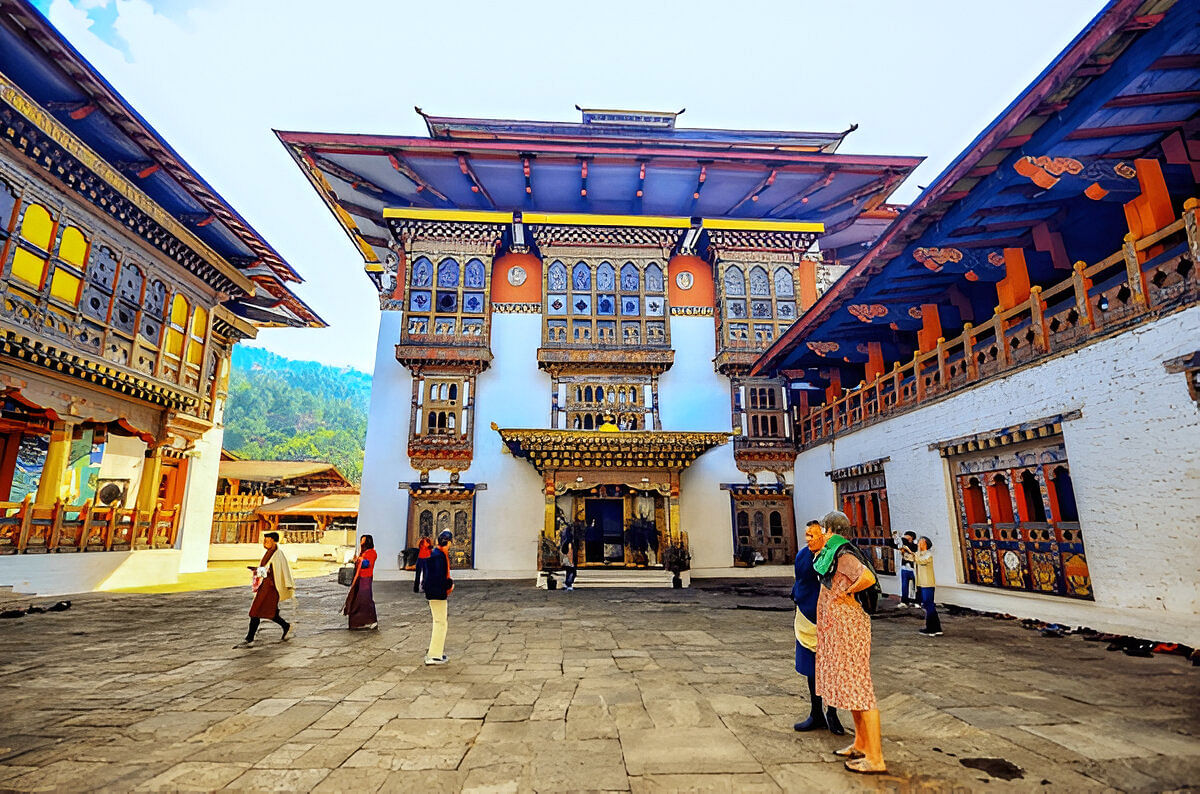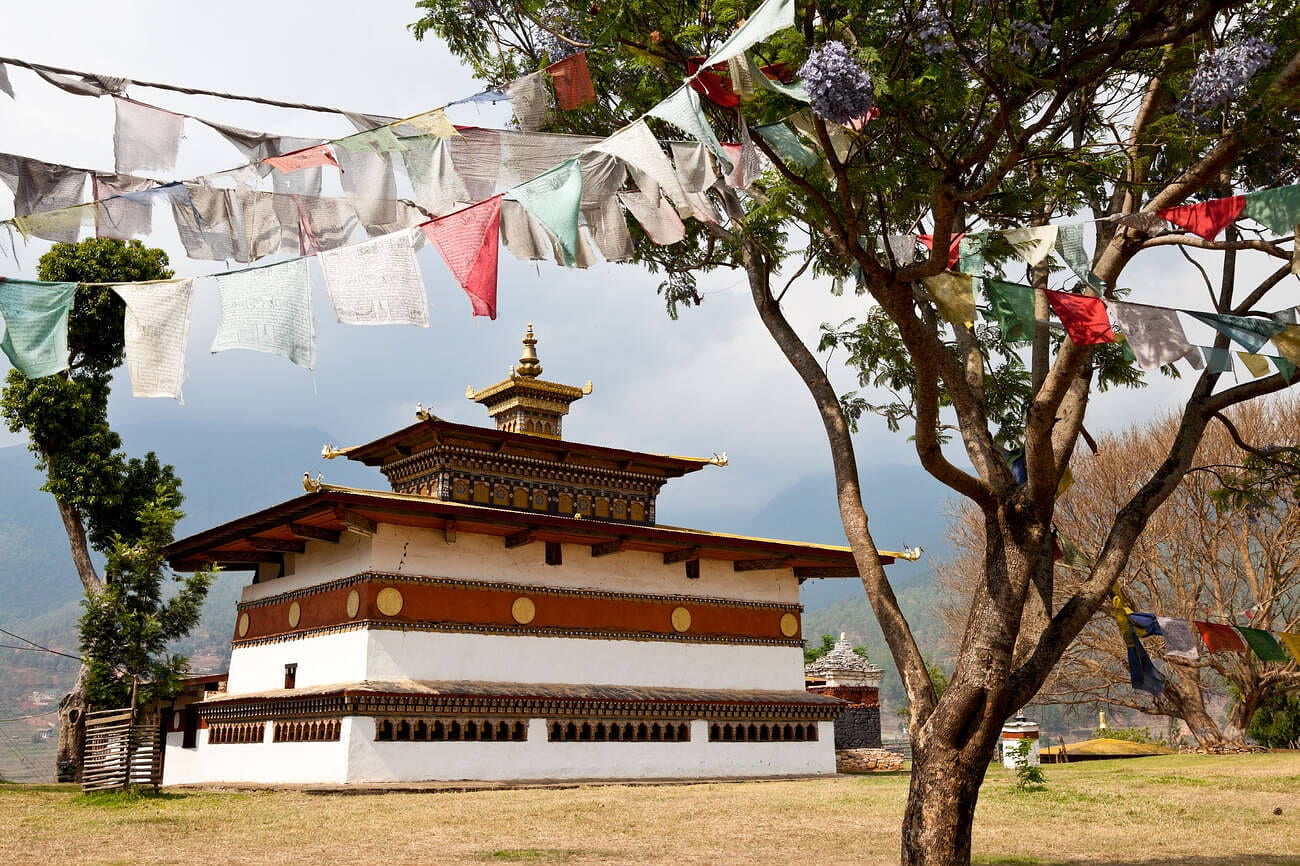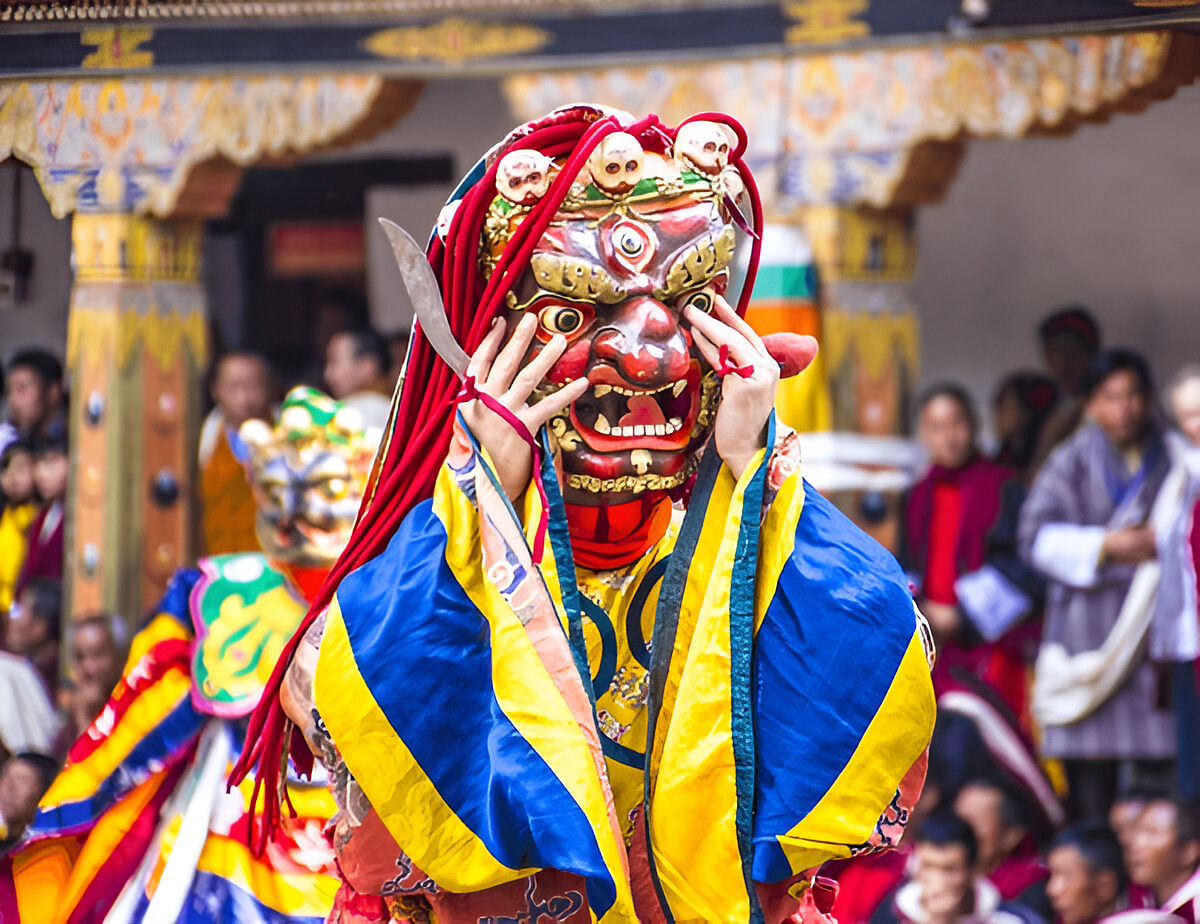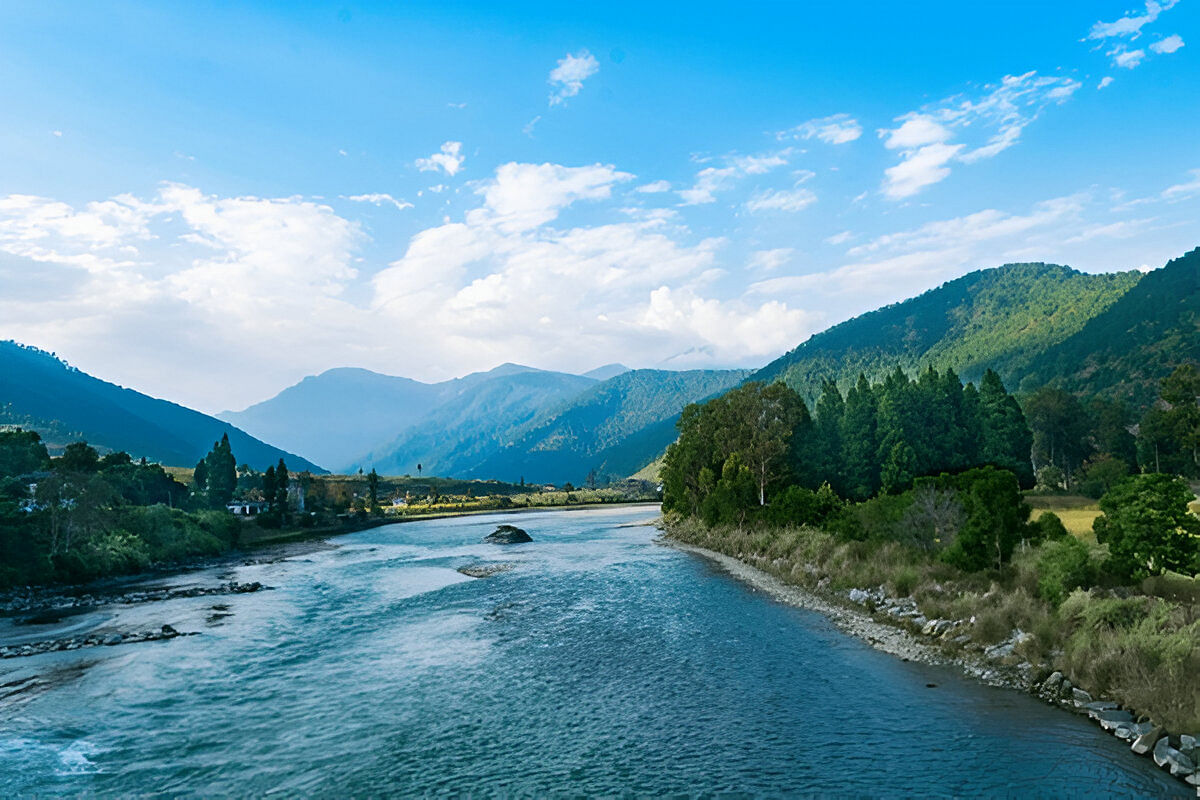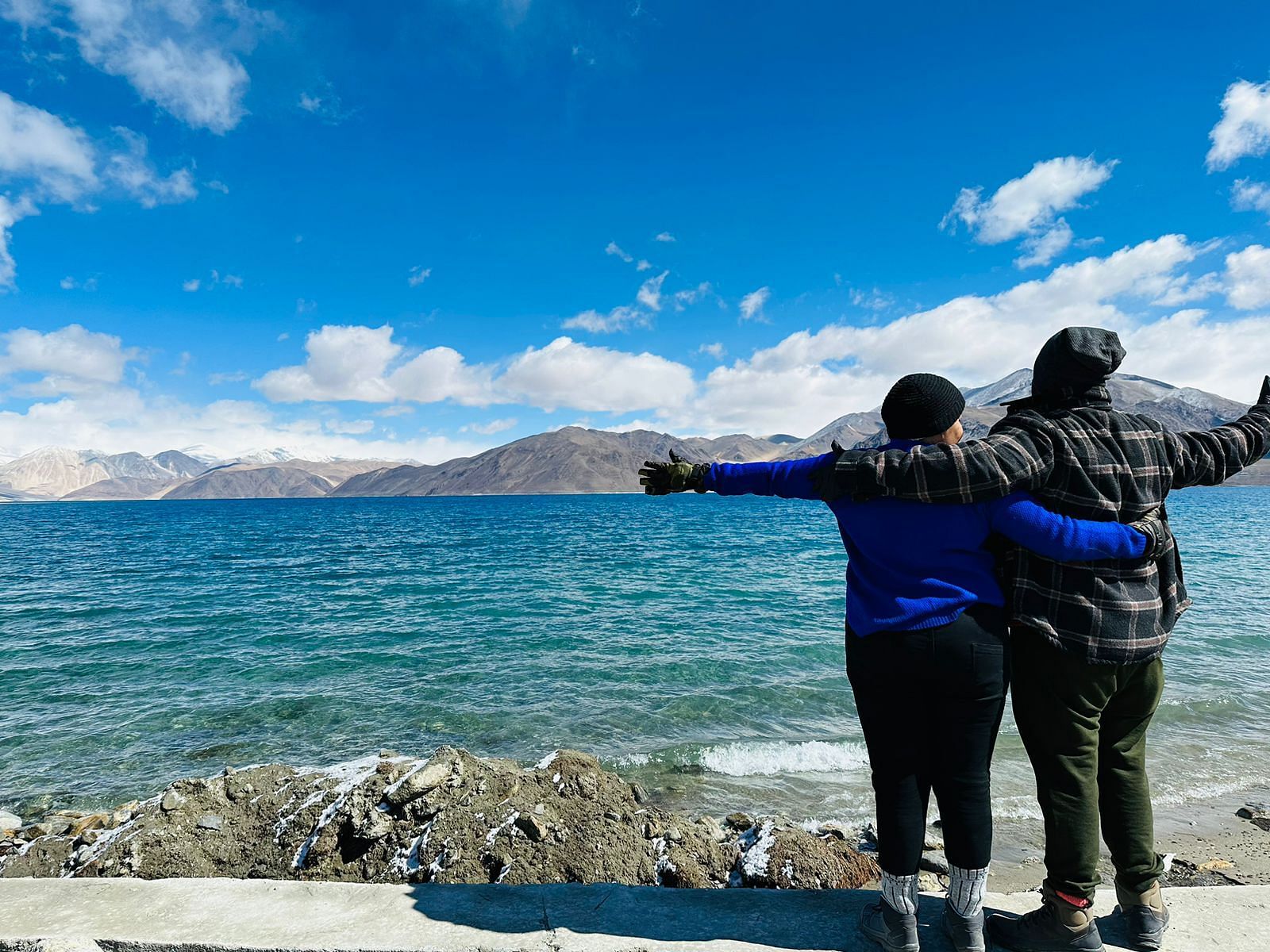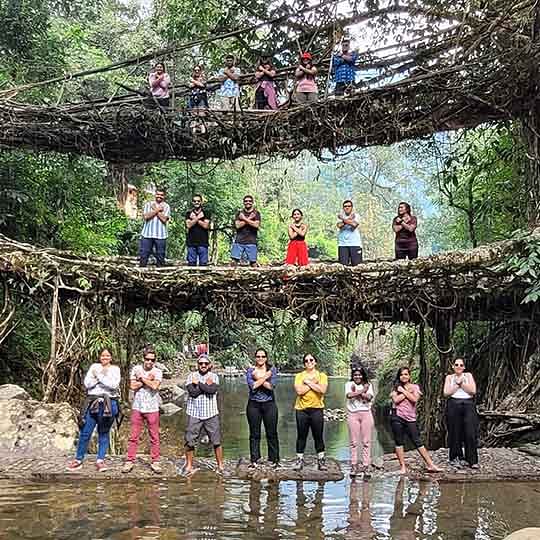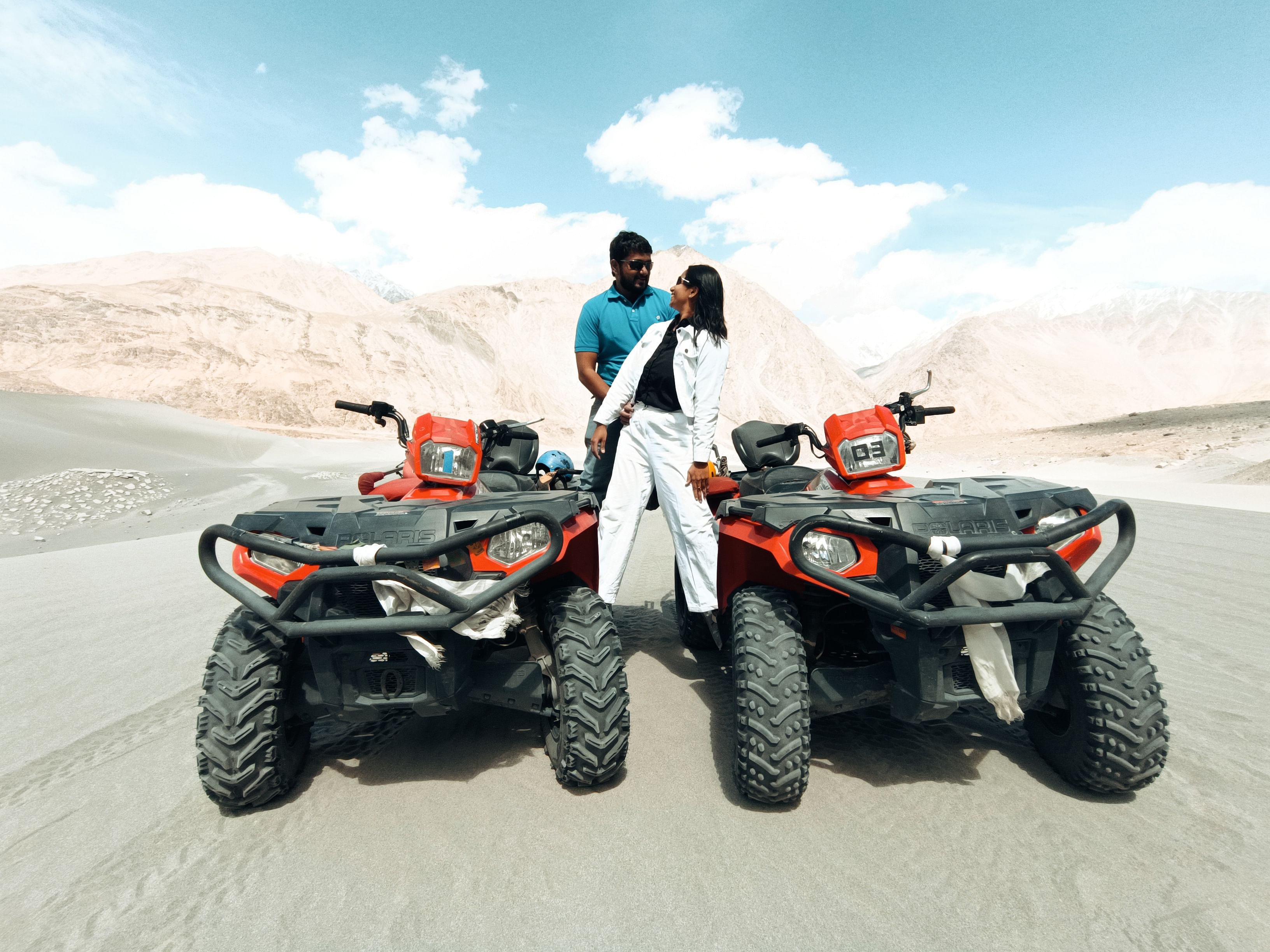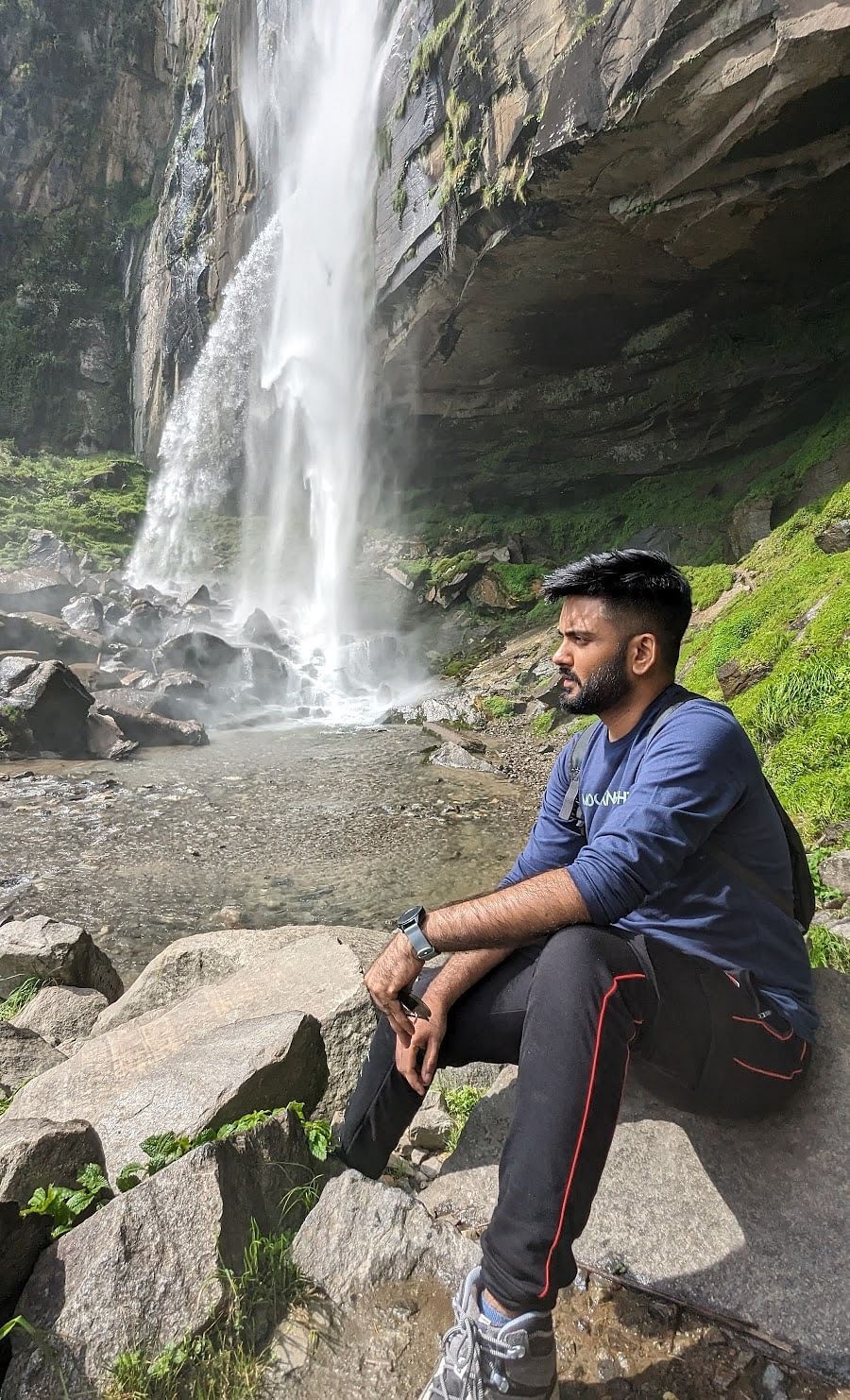Punakha Dzong is hands down one of the most beautiful sites you'll visit in Bhutan. Imagine this huge fortress located perfectly where two rivers merge - it's like a fairytale come to life. Locals constructed this gem back in 1637, and quite frankly, they had no idea what they were getting themselves into. Those golden roofs and clean white walls set against that green valley? Magic.
If you are visiting and looking for things to do in Bhutan, make this one your number one. We promise you, when the purple jacaranda trees begin to bloom around the fort in spring, you'll see why everyone speaks of it nonstop. Strolling through the courtyards and looking at the monks in their crimson robes as they go about their day - it's something special.
Here's the best part: this isn't merely a fancy building. Bhutan's very first king was crowned here, and they still celebrate major ceremonies in this location. If you're a history enthusiast or simply an architecture enthusiast, you won't be let down. Let’s walk together through centuries of culture, faith, and natural beauty with our Bhutan Tour Packages.
Highlights of Punakha Dzong
- Location: Confluence of the Pho Chhu and Mo Chhu rivers in Punakha Valley, about 3 hours from Thimphu.
- Timings: Open daily from 9:00 AM to 5:00 PM in summer; winter hours are 11:00 AM - 1:00 PM and 3:00 PM - 5:00 PM.
- Entry Fees: INR 500 per adult for international tourists; free for kids under 5 and 50% off for students aged 6-18.
History of Punakha Dzong - A Story Carved in Stone
The history of Punakha Dzong begins in 1637, when Bhutan’s unifier Zhabdrung Ngawang Namgyal chose this site to build a fortress‐monastery. He placed it on purpose, at the rivers’ confluence, with views of fertile fields and protective mountains. He wanted a stronghold to defend against Tibetan invasions and a place to grow Buddhism.
Once completed in 1638, Punakha Dzong quickly became Bhutan’s administrative heart. It held the seats of both government and religion. In 1907, the dzong became the setting for a historic coronation-when the first king of Bhutan was crowned, officially uniting the country as a monarchy. For nearly 300 years, it served as the official capital until 1955, when Thimphu took over that role.
Over its long life, Punakha Dzong weathered floods and quakes. In the early 1950s, a fierce earthquake shook parts of the fortress, and flash floods swept through the valley. Then, in 1994, heavy rain brought a devastating flood that breached the dzong’s walls. Yet each time, the local people came together to restore it with love, care, and traditional craftsmanship. The history of Punakha Dzong shows us not just the passing of centuries, but the enduring strength of Bhutan’s community spirit.
Suggested Read: Bhutan Road Trip Package
Architecture of Punakha Dzong
When you first see the architecture of Punakha Dzong, it takes your breath away. This dzong is a breathtaking example of classic Bhutanese style: thick stone walls, massive timber beams, and gleaming golden rooftops. Yet it’s more than a fortress-it’s a temple alive with prayer, art, and meaning.
The fortress rises in terraces above the rivers, with a large central courtyard that feels both grand and peaceful. That courtyard is framed by whitewashed walls and multi‑tiered roofs. Within, you find temples, monks’ living quarters, meeting halls, and offices. Walk around, and you find hidden corridors-whisper‑quiet passages monks used for prayer, study, or simply shelter during uncertain times.
Inside, the walls glow with paintings of dragons, Buddhas, lotuses, and Bhutanese legends. The ceilings are often red and gold, with intricate woodwork carved by master craftsmen. Even the windows are framed in bold colours-red, blue, white, yellow-each bearing spiritual meaning.
Every detail of the architecture of Punakha Dzong was designed with a purpose. Temples face sunrise or sunset in ways that highlight sacred statues. Walkways guide pilgrims in a quiet flow, and prayer wheels stand placed to bless anyone passing. From the thick defending walls outside to the quiet, light‑filled shrines within, the architecture of Punakha Dzong feels like a bridge between earth and temple, between ancient wisdom and today’s quiet devotion.
Best Time to Visit Punakha Dzong - When to Go
Choosing the best time to visit Punakha Dzong means putting yourself where weather, colour, and quiet align just right.
- Spring (March–May) is magical. Peach blossoms dot the valley in pale pink and white. Rhododendron trees bloom, and the air feels soft and fresh. As you walk toward the dzong, it feels like walking through a poem.
- Autumn (September–November) brings crisp air, clear skies, and perfect light. The monsoons passed, farm fields turn golden, and the valley hums with harvest energy. Festival season begins, too-spiced tea, drumbeats, colourful locals in their national dress.
- Winter (December–February) is cold, especially before sunrise, but it brings unique beauty. The higher mountains may wear snow caps, and the valley grows quiet. It’s peaceful-perfect for those who want calm without crowds. Just pack your warm clothes.
- Summer monsoon (June–August) means storms, lush green scenery, and fewer tourists. It can be rainy and foggy, with landslide risk. Still, if you don’t mind wet weather and you love solitude, this season has a strange charm.
In short, spring and autumn are dream seasons-bright, mild, and easy to travel. Winter is crisp and quiet. Avoid monsoon if you can-unless the rain is what draws you.
How to Reach Punakha Dzong
Let’s talk about how to reach Punakha Dzong, because getting there is part of the magic.
From Paro Airport
Bhutan’s only international airport is in Paro. From there, you’ll cross into Punakha on a winding route. The road climbs to Dochu La Pass at 3,100 meters, offering breathtaking Himalayan views-on a clear day, you can see peaks like Gangkar Puensum. Then you roll downhill, through green forests and river valleys. In total, the trip takes around 3–4 hours.
From Thimphu
If you’re based in the capital, Punakha Dzong is about 75 kilometres away. A private taxi or shared bus will wind you through hills, across valleys in Bhutan, and past local villages and farm fields. From Paro to Punakha, the road journey takes about 4.5 to 5 hours, covering 125 km.
Once You Arrive
When you reach Punakha town itself, charming-you can walk to the dzong in minutes. Or take a local taxi or rickshaw, which are easy to find and cheap. The walk crosses a lovely wooden suspension bridge that offers a first glimpse: water rushing below, the dzong rising ahead, white walls glowing in the sun.
Things to See in Punakha Dzong - What to Experience
Let’s look closely at things to see in Punakha Dzong. This dzong is full of places that make you stop, look, and listen.
1. The Big Central Courtyard
Step inside, and you’ll find yourself in a large, open space framed by tall walls and elegant rooftops. This courtyard holds court for prayer, ceremony, and celebration. It’s quiet most of the day-except when monks gather, chanting an echo from centuries past.
2. Main Temple (Thromde Lhakhang)
Just beyond the yard stands the heart of spiritual life in the dzong. Inside, statues of Buddha and revered lamas shine in candlelight. The walls are painted with stories of compassion, divine visits, and moral lessons. It’s peaceful and bright.
3. Chapel of the Founder
A smaller shrine holds relics and objects of Zhabdrung Ngawang Namgyal. Here, you can feel his legacy and deep devotion. Monks bow and pray here quietly, and visitors often pause in respectful silence.
4. Prayer Wheels and Mantras
Around the courtyards and along walls are rows of spinning prayer wheels. Whirling them releases blessings with each turn. The mantra scrolls inside the wind with your motion and reminds you of kindness and compassion. It’s both meditative and moving.
5. Secret Corridors
If you look closely, you’ll find narrow passages linking different areas-ancient paths monks used to slip away, pray alone, or reach safety. Walking through them is like stepping into a hidden history.
6. Golden Roofs and Woodwork
Outside, glance up at the ornate wooden eaves, layered roofs, bright paint, and gold leaf details. The craftsmen who created this structure showed care, skill, and attention.
7. Riverside View
Stand by the northern courtyard walls or step outside onto the wooden bridge-it’s a postcard moment. The two rivers flow side by side, clear and fresh, with mountains behind and the dzong behind you. It’s a good place to sit, breathe deeply, and feel present.
8. Gardens and Orchards Nearby
Just beyond the walls, peach orchards bloom in spring, and small flower gardens distract you with colour. It’s a lovely place to take photos, stroll, or find a quiet spot to pause.
Places to Visit Near Punakha Dzong - Beyond the Walls
The valley around Punakha Dzong is full of treasures. Here are some wonderful places to visit near Punakha Dzong once you’ve explored inside:
1. Chimi Lhakhang:
Chimi Lhakhang is about 9 kilometres away. This temple honours Drukpa Kunley - the “Divine Madman” known for his unconventional wisdom and blessings for fertility. Couples walk over the long phallic wooden symbol, pray, and leave offerings. It’s playful, sacred, and full of smiles.
2. Khamsum Yulley Namgyal Chorten:
Khamsum Yulley Namgyal Chorten is four kilometres upriver; you can hike to this white stupa built in 2004. It honours peace and Bhutanese identity. The hike takes around 2–3 hours round‑trip. At the top, the valley unfolds below with calm grandeur.
3. Nunnery on the Ridge:
Opposite the dzong, up on a ridge, is a small nunnery. You can visit to see nuns studying, chanting, and living in peace. Their voices float into the valley on prayer wind. You learn how their daily rhythm breathes devotion and service.
4. Suspension Bridges:
Around Punakha are several suspension bridges. These wooden bridges bounce slightly with each step, and the rivers roar 30 meters below. It’s a unique way to see the valley, feel the water’s pulse, and notice how clear the air is.
5. Punakha Town:
Down a few streets, the small town centre is full of life. Local shops sell veggies, woven scarves, Bhutanese sweets, and wooden carvings. There are little cafes with butter tea, dumplings, and simple fried dal dishes. It’s friendly, unpretentious, and fresh.
Suggested Read: Complete Bhutan Tour Package
Festivals That Bring It Alive
When you visit during the best time to visit Punakha Dzong- especially spring or autumn-you may get to see one of the heart‑warming festivals.
1. Punakha Drubchen
Held in February, this 10‑day masked drama tells how Bhutan defeated invaders in the 17th century. You’ll see masked actors, colourful costumes, and drums that shake your chest. Locals smile, greet you, and food stalls serve pinhsi, iced and sweet tea. It’s history in living colour.
2. Punakha Tshechu
This sacred dance festival lasts three days and celebrates Padmasambhava, a beloved saint. Monks perform ancient masked dances, and townsfolk in their national dress weave around in bright lines. The energy is gentle, spiritual, yet celebratory. Offerings are made, blessings handed out, and small children wear tiny versions of traditional Bhutanese dress.
When you attend these festivals, remember: dress respectfully (shoulders and knees covered), take photos only when it’s okay, and partake in blessings with quiet joy.
Here are some small, human tips for your visit:
- Dress with respect. Cover shoulders and knees. A scarf is handy.
- Shoes come off at temple doors-carry them or slip on easy shoes.
- Walk quietly. This is a place of prayer for monks and locals.
- Ask first before taking photos, especially inside temples or during prayers.
- Bring water and snacks, since shade can be limited.
- Check the weather in advance. Mountain roads may close in heavy rain or snow.
- Hire a guide or driver, if you’d like the stories behind each corner-you’ll learn more than from signs alone.
- Stay nearby overnight if you can-it means you’ll catch early morning light, monks’ chants, and the quiet calm as the valley wakes.
Final Thoughts
Punakha Dzong is not just a building-it’s a place where stone turns into story, where rivers carry blessing, where centuries of prayer echo in wooden corridors, and where every monk, child, and pilgrim adds to a living tapestry. Visiting here isn’t just about seeing-it’s about feeling. Feeling tradition, faith, nature, and human kindness all in one day.
So when you plan to visit Punakha Dzong Bhutan, choose a gentle season, walk the suspension bridge under mountain light, breathe in deep, step through courtyard doors, and consider yourself part of a sweet, unfolding story. Let the whispers of history and the hum of prayer become a part of your own journey.




